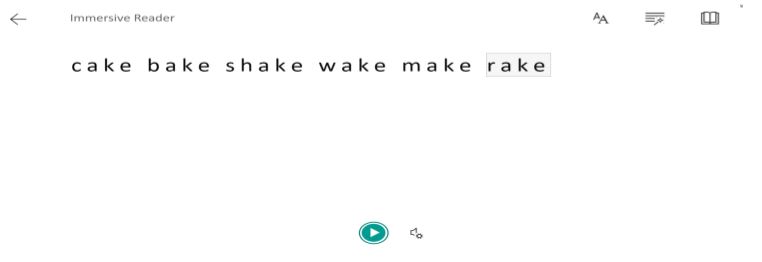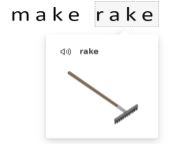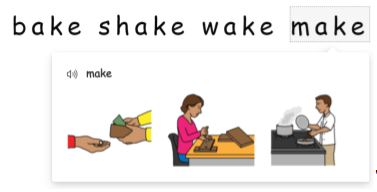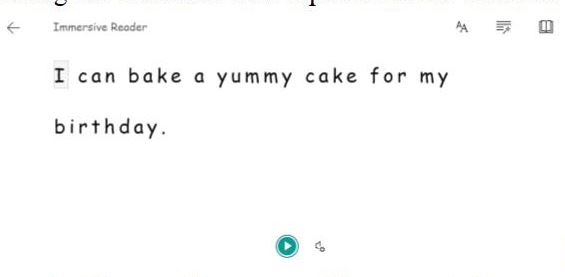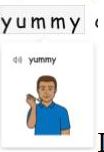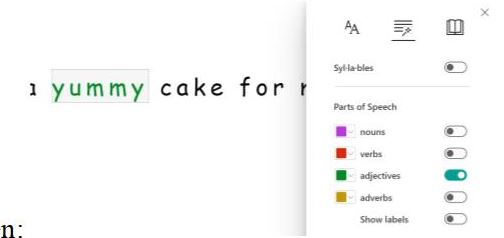Immersive Reader
Immersive Reader is a tool that is used by every educator in the academy to support teaching and learning as well as communicating with parents, especially those with English as an additional language. This tool is so diverse and everyone uses it.
Here are some examples from a few members of staff.
Mrs Okperri - Key Stage 1 Teachers
Immersive Reader has been a fantastic tool to support me deliver my phonic sessions to pupils in Year Two that need to re-sit their Phonics Screening. My current Year Two pupils are very familiar with this as they were introduced to it last academic year and use it as part of their day to day reading words with different focus sounds which are then put into a whole sentence to read. If the children are finding the word difficult to read, they click View, Immersive Reader icon and press play to listen and follow the words put into sentences.
For example, we recapped on the split vowel digraph a-e. We used six words to say out loud one by one: cake bake shake wake make rake. I talked about what sound the children could hear in each word. They identified the a-e phoneme. I then modelled writing each of the a-e word down for the small group of pupils to see and read on the big screen. Once noticed we highlighted the a-e grapheme as it were written in each word:
To consolidate learning the a-e sound we clicked onto View then pressed the Immersive Reader icon:
The pupils then press play to hear back each word to know what it sounds like (phoneme) and how its written (also looking at the spelling of the word with the grapheme):
This was also a great tool for reading with meaning and understanding what each was. For example, when I asked a pupil what a cake is, they replied, “It is something you can bake or buy in a shop and eat.” Another child said, “It is like a birthday cake made out of sponge.” Here I was able to assess if the pupils engaged in this activity were decoding the words (reading them) but also focusing on encoding (understanding what they were reading). I was provided great examples by children, however when we got onto the word ‘rake’ majority of my pupils within the groups were unfamiliar with what it was and started to guess. So I directed a child to click on the word and it displayed the image to help understand what it is for all the visual learners:
Once viewing the image, a pupil then went onto to say, “My daddy has that to clean the garden.” To conform that it said rake, the pupil pressed on the sound icon to listen back to the word and then repeat. The picture dictionary function is also great way of my EAL pupils to engage to read and understand familiar and unfamiliar words as it provides the visual representation of the word:
Towards the end of the activity we used to put
the focus sound word in a full sentence where pupils used to practice writing it down with the correct punctuation and spelling first. For example, “I can bake a yummy cake for my party.” Then I would model writing the sentence with input from the children on the big screen to be played back on Immersive Reader:
Here pupils enjoyed listening back to the sentence and self-correcting any spelling or missing punctuation. To further focus on a word, I would ask child to find and read the word “yummy.” Child would point to the word and explained what it mean.
In this sentence we were also able to unpick how yummy was a describing word, an adjective describing the cake. The ‘Grammar Options’ icon enables you to focus on different words grammatically in a sentence. In this instance we focused on the adjective by changing the word ‘yummy’ to the colour green:
Sometimes to break down the sounds in the words within a sentence for target pupils, we used the Grammar Options to turn ‘Syllables on,’ press play to hear and see the words ‘yummy’ and ‘birthday’ broken down into syllables:
Again, this was a great tool for my pupils to clap out or use their fred fingers to break down the syllables to help read the longer words.
This has been a fun, engaging and creative way style of learning new and revisiting old sounds for my pupils and so we will continue to use this amazing tool once back in action in the classroom.



